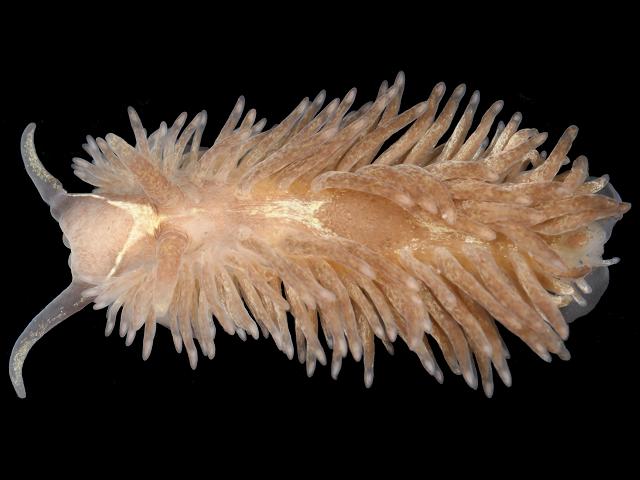
APHOTOMARINE
An educational resource dedicated mainly to the photography
and diversity of marine life that can be found in coastal waters
and intertidal areas of Great Britain and Ireland by David Fenwick.

Aeolidia filomenae Kienberger, Carmona, Pola, Padula, Gosliner & Cervera, 2016*
Scroll down and rollover titles to change screen image or click on title to view image.
*Explanation at the foot
of this column.
of this column.
Common grey sea slug
possibly Aeolidia filomenae
- dorsal view 1
Common grey sea slug
possibly Aeolidia filomenae
- dorsal view anterior 1
Common grey sea slug
possibly Aeolidia filomenae
- dorsal view anterior 2
Common grey sea slug
possibly Aeolidia filomenae
- dorsal view 2
Specimen above found at Chimney Rocks, Penzance, Cornwall, 14.02.17.
Common grey sea slug
possibly Aeolidia filomenae
- variation of colour 1
Common grey sea slug
possibly Aeolidia filomenae
- dorsal view 3
Common grey sea slug
possibly Aeolidia filomenae
- rolled-up in ball 1
Common grey sea slug
possibly Aeolidia filomenae
- in middleshore pool 1
Common grey sea slug
possibly Aeolidia filomenae
- in middleshore pool 2
Common grey sea slug
possibly Aeolidia filomenae
- in middleshore pool 3
Common grey sea slug
possibly Aeolidia filomenae
- in tank close-up 1
Common grey sea slug
possibly Aeolidia filomenae
- in pool 1
Common grey sea slug
possibly Aeolidia filomenae
- in pool close-up 1
Common grey sea slug
possibly Aeolidia filomenae
- in pool close-up head 1
Common grey sea slug
possibly Aeolidia filomenae
- out of water 1
Common grey sea slug
possibly Aeolidia filomenae
- eggs 1
Common grey sea slug
possibly Aeolidia filomenae
- eggs 2
Common grey sea slug
possibly Aeolidia filomenae
- eggs 3
Common grey sea slug
possibly Aeolidia filomenae
- eggs 4
Common grey sea slug
possibly Aeolidia filomenae
- feeding on anemones 1
Common grey sea slug
possibly Aeolidia filomenae
- feeding on anemones 2
*It is the opinion of two of the authors of the species that it is likely the images above represent Aeolidia filomenae Kienberger, Carmona, Pola, Padula, Gosliner & Cervera, 2016.
Aeolidia filomenae Kienberger, Carmona, Pola, Padula, Gosliner & Cervera, 2016 has recently been separated from Aeolidia papillosa after a recent molecular study of the species.
I will endeavor to find specimens of Aeolidia filomenae and Aeolidia papillosa to photograph in detail. However, I am told that the only sure way of identifying each species is by sequencing, so these species could be extremely difficult to tell apart, especially in SW England as no material was sequenced in the recent study. It is therefore not known if we have Aeolidia filomenae or Aeolidia papillosa, or both here.
I personally feel that specimens from the SW should be recorded as Aeolidia papillosa untill more is known about both species or until more are sequenced. It is also possible that more cryptic species may be found within Aeolidia papillosa.

The main objective of this website is in furthering environmental awareness and education through the medium of photography. To increase awareness and access to the wildlife of the region and help
people find and identify it. Sometimes the difference between species is obvious but many species can only be determined by observing microscopic characteristics that are specific to any one species.